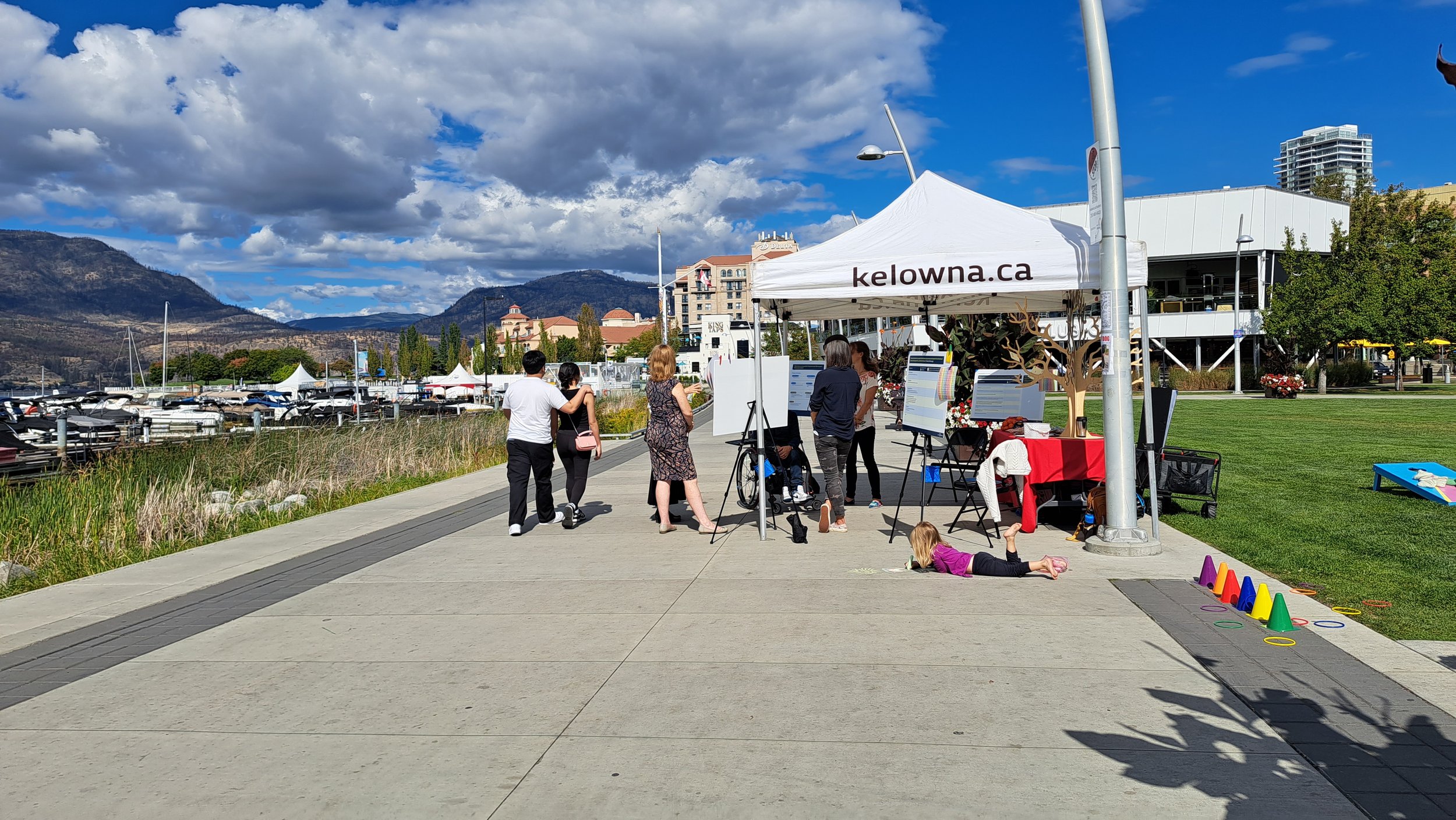Kelowna accessibility plan
Happy Cities collaborated with Meaningful Access Consulting and the City of Kelowna to develop an accessibility plan, enabling people of all ages, backgrounds, and abilities to fully participate in community life.
A community pop-up engagement event held in Kelowna, BC. (Happy Cities)
In fulfilling the Accessible British Columbia Act, the City of Kelowna committed to develop an Accessibility Plan to identify and remove barriers to participation in City spaces, programs, transportation, and services. The goal of the plan is to make life better for everyone in Kelowna—ensuring everyone is able to fully join in community life regardless of age, background, or ability.
Drawing from our experience on other municipal accessibility plans, Happy Cities and Meaningful Access Consulting (MAC) worked together to develop the plan. During the fall of 2024, we heard from over 400 members of the Kelowna community to learn about the City’s current accessibility challenges and opportunities through an online survey, focus group sessions, and pop-up engagement events.
What we learned from the community
Residents shared the barriers that they face with accessibility, and identified several key areas where accessibility could be improved, including emergency preparedness, better access to public spaces, and more intergenerational spaces. Residents highlighted the need for improved physical access to public spaces, sidewalks, and transit, with clearer guidelines around how buildings and public infrastructure could be built differently to ensure accessibility for all ages and abilities. Additionally, the community advocated for more accessible communications and information from the City.
About the accessibility plan
Kelowna’s Accessibility Plan aims to enhance accessibility across multiple spheres: improving the accessibility and communication of city services, improving access to public facilities and infrastructure, and fostering inclusive employment opportunities. The plan also prioritizes accessible communication methods, transportation systems, and improving staff and community training about accessibility.
Community members visited a series of pop-up engagement events that took place in Kelowna, BC. (Happy Cities)
What is an accessibility plan?
An accessibility plan seeks to identify, remove, and prevent barriers to access in areas municipal spaces, programs, and services. At the municipal level, it may address areas including the built environment, transportation, programs and services, communications, technology, financial services, and more. It should be shaped first and foremost by people with disabilities, in addition to care partners, advocates, community-based organizations, older adults, municipal staff, and the wider community. By removing barriers to access, accessibility plans make it easy for everyone—regardless of age, background, or ability—to fully participate in community life, creating better wellbeing outcomes for all community members.
Want to learn more? We invite you to email us at info@happycities.com.




